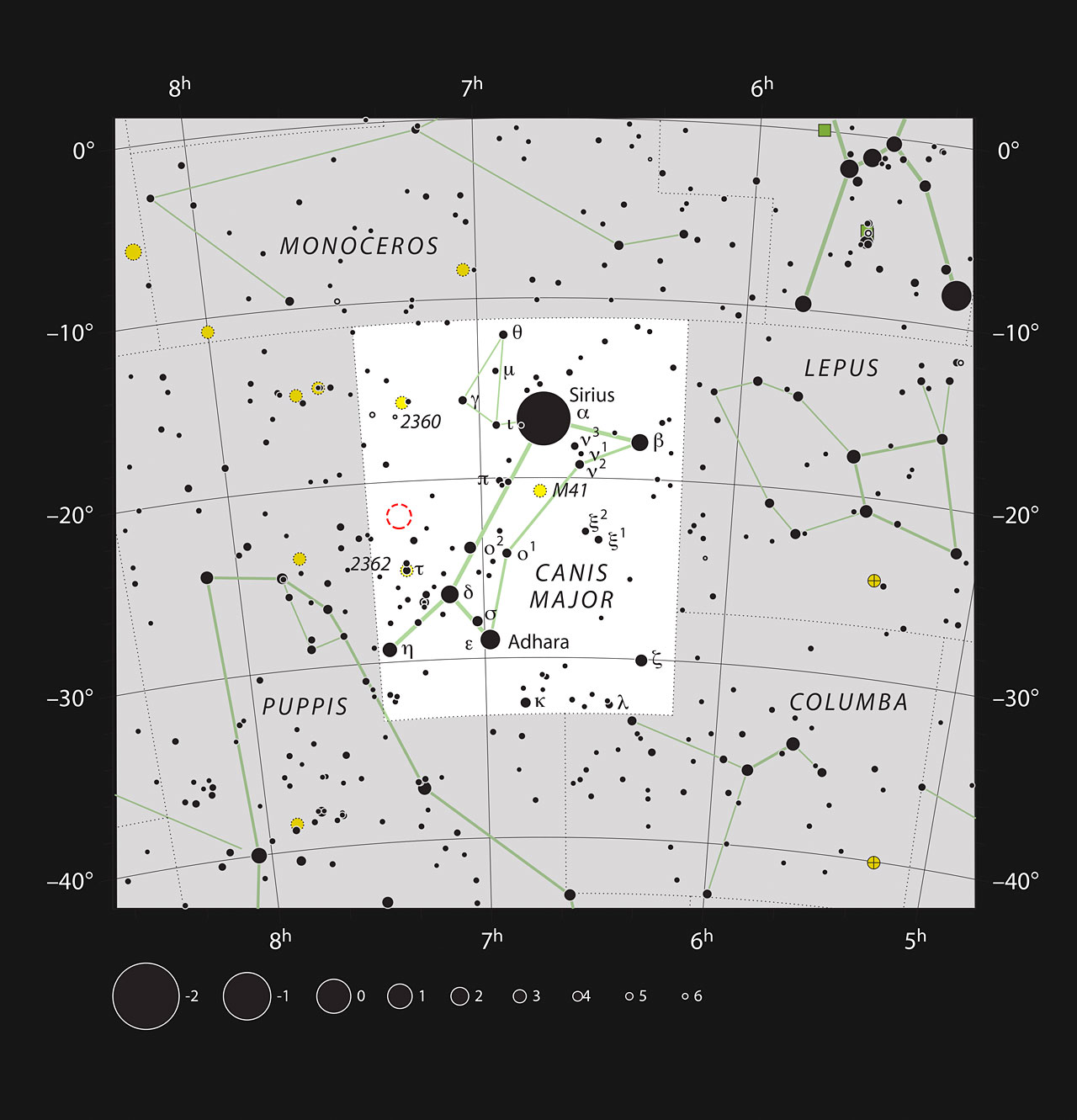Red, White & Blue! Stars Cluster in Festive Cosmic Portrait

A cluster of blue and white stars glows vividly against the red hydrogen gas of their surrounding stellar birthplace in a new cosmic portrait taken at the European Southern Observatory's (ESO) La Silla Observatory in Chile.
Reminiscent of the colors in the American flag, and released just in time for America's Independence Day on July 4 , the image shows open star cluster NGC 2367 and the surrounding hydrogen gas. These objects are embedded in a supershell — an enormous expanding structure out at the edge of the Milky Way.
The stars of NGC 2367 are young and hot, and shine with a brilliant blue light. However, this group won't be together long, comparatively speaking: The pull of other clusters and gas nearby will tear them apart over the next few hundred million years.
In fact, the sun is believed to have left a similar cluster, according to a statement from ESO.
The stars appear against a backdrop of hydrogen gas from the nebula where they were born, which emits light after being energized by the radiation of the stars embedded in it. That nebula is the core of another, larger nebula called Brand 16, which sits inside a vast, rapidly expanding supershell. Supershells stretch for hundreds of light-years; these structures are some of the largest in the galaxy. They form over time as stellar winds and supernova shock waves blast gas into expanding, merging bubbles.

NGC 2367 is about 7,000 light-years away from Earth. The cluster appears near the constellation Canis Major (the Greater Dog) in the night sky, and can be seen with a small telescope.
This stellar portrait was captured by the Wide Field Imager camera on ESO's 2.2-meter (7.2 feet) telescope at La Silla Observatory in Chile.
Get the Space.com Newsletter
Breaking space news, the latest updates on rocket launches, skywatching events and more!
Email Sarah Lewin at slewin@space.com or follow her @SarahExplains. Follow us @Spacedotcom, Facebook and Google+. Original article on Space.com.
Join our Space Forums to keep talking space on the latest missions, night sky and more! And if you have a news tip, correction or comment, let us know at: community@space.com.

Sarah Lewin started writing for Space.com in June of 2015 as a Staff Writer and became Associate Editor in 2019 . Her work has been featured by Scientific American, IEEE Spectrum, Quanta Magazine, Wired, The Scientist, Science Friday and WGBH's Inside NOVA. Sarah has an MA from NYU's Science, Health and Environmental Reporting Program and an AB in mathematics from Brown University. When not writing, reading or thinking about space, Sarah enjoys musical theatre and mathematical papercraft. She is currently Assistant News Editor at Scientific American. You can follow her on Twitter @SarahExplains.









